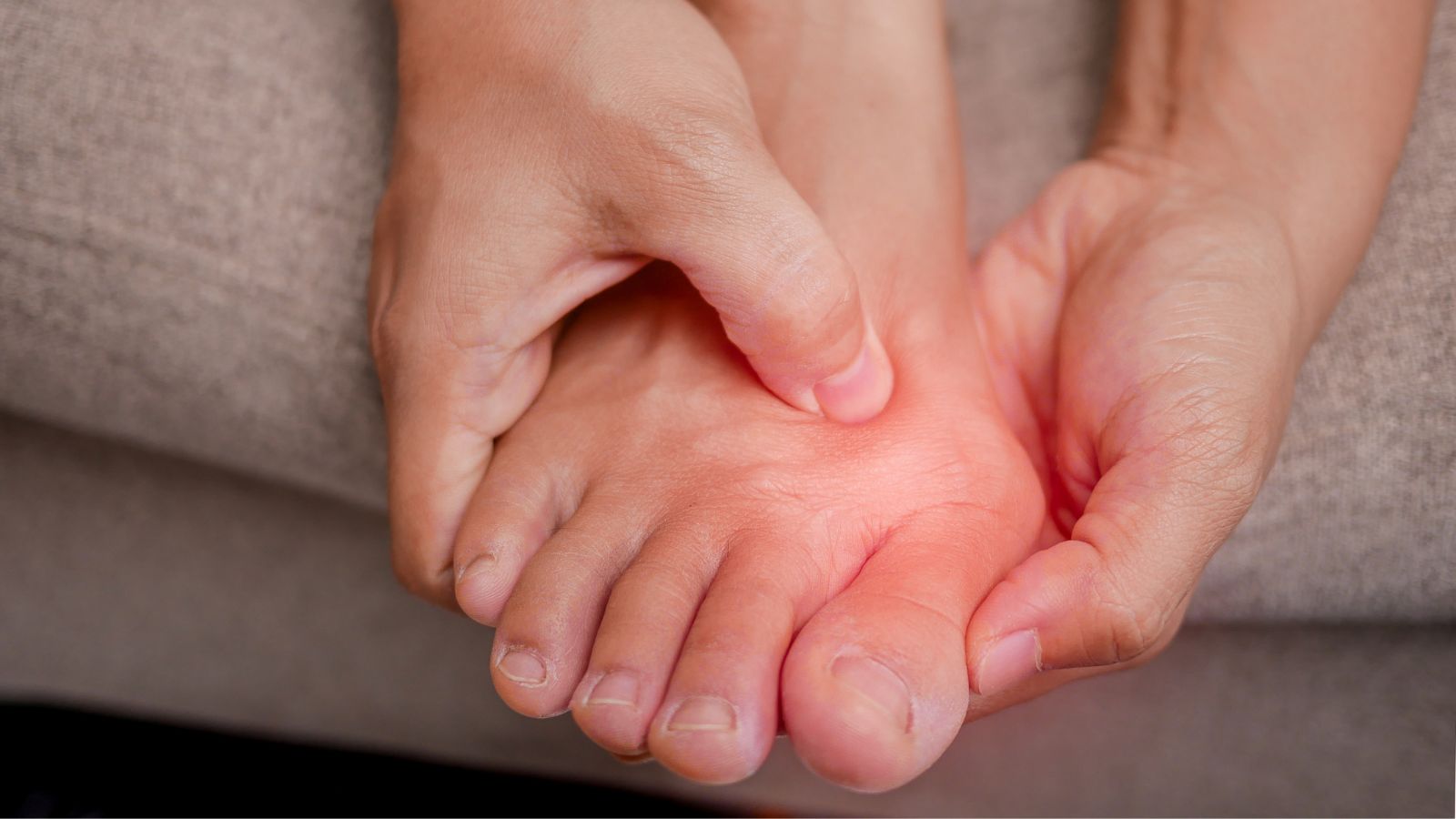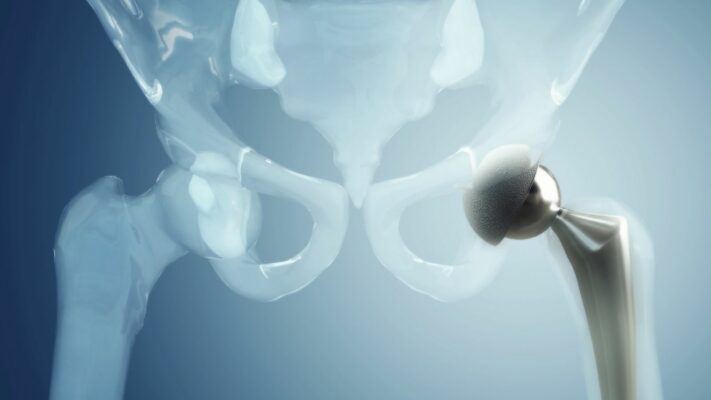Prof. Dr. Murat Demirel, one of the best orthopedic doctors performing hallux rigidus (stiff big toe) surgery in Ankara, stands out with his long years of experience in the surgical treatment of this condition, which causes arthritis and limited movement in the big toe joint. Hallux rigidus usually occurs as a result of the gradual wear of joint cartilage and can cause pain while walking, stiffness, and difficulty choosing shoes. In advanced stages, surgical intervention is one of the most effective solutions both to relieve pain and to restore mobility. Among the hospitals in Ankara performing hallux rigidus surgery, Prof. Dr. Demirel applies personalized surgical plans for his patients in advanced medical centers with high hygiene standards.
Before surgery, Prof. Dr. Demirel determines the most appropriate surgical method with a detailed evaluation and closely monitors his patients after the operation. With post-operative doctor recommendations, the recovery process is ensured to be safe, fast, and permanent. In addition, he provides transparent and up-to-date information about hallux rigidus surgery costs in Ankara, helping his patients make informed decisions. You can also protect your foot health, reduce your pain, and walk more comfortably by making an appointment right away.
| Disease Name | Hallux Rigidus (Stiff Big Toe) |
| Affected Area | Big toe (first metatarsophalangeal joint) |
| Main Causes | Degenerative joint disease (arthrosis), trauma, repetitive microtrauma, rheumatic diseases |
| Symptoms | Restricted movement in the big toe, pain while walking, difficulty wearing shoes, joint stiffness and swelling |
| Risk Factors | Family history, trauma, unsuitable footwear, foot deformities, repetitive strain |
| Diagnostic Methods | Clinical examination, X-ray (evaluation of joint space narrowing and osteophyte formation) |
| Treatment Methods | Orthopedic shoes and insoles, painkillers and anti-inflammatory drugs, physical therapy; in advanced cases, surgery (cheilectomy, arthrodesis, prosthesis applications) |
| Surgical Indications | Severe pain, loss of function, and cases unresponsive to conservative treatment |
| Need for Physical Therapy | Recommended to maintain joint mobility, reduce pain, and increase muscle strength |
| Possible Complications | Movement limitation, persistent pain, post-surgical joint stiffness or infection |
| Recovery Period | A few weeks with conservative treatment; 6–12 weeks after surgery |
| Need for Follow-up | Disease progression and response to treatment should be evaluated with clinical and radiological check-ups |


Prof. Dr. Murat Demirel
Orthopedics and Traumatology Specialist
Orthopedics Specialist Prof. Dr. Murat Demirel was born in Ankara in 1974. He completed his primary education at Ankara Kavaklıdere Primary School and his secondary and high school education at Ankara Atatürk Anatolian High School. Dr. Demirel graduated from Ankara University Faculty of Medicine in 1998 and completed his residency in Orthopedics and Traumatology at Ankara Numune Training and Research Hospital, 1st Orthopedics and Traumatology Clinic, in 2004.
PhD
Ankara University Institute of Health Sciences
Specialization
Ankara Numune Training and Research Hospital, 1st Orthopedics Clinic
Medical School
Ankara University Faculty of Medicine
Yazı İçeriği
What is Hallux Rigidus and why does it develop?
To better understand Hallux Rigidus, we can compare your big toe joint to a door hinge. A healthy joint moves smoothly and easily, just like a well-oiled hinge. This smoothness is provided by the slippery cartilage tissue that covers the ends of the bones forming the joint and acts as a cushion. Hallux Rigidus is a progressive condition that develops when this valuable cartilage tissue begins to wear down and deteriorate for various reasons. When the cartilage thins and disappears, the underlying bone surfaces begin to rub against each other. This friction, just like a rusty hinge squeaking and struggling, leads to pain, swelling, and most importantly, restricted movement in the joint.
As a reaction to this friction, our body begins to produce new bone formations, known as bone spurs (osteophytes), on the edges of the joint. These spurs usually form on the top of the toe and further increase pain by pressing when wearing shoes or acting as a barrier when you try to bend your toe upward.
In the early stages of the disease, there is a period when movement is restricted but the joint has not completely stiffened. We call this stage “Hallux Limitus” (limited big toe). If the condition is detected at this stage and precautions are taken, its progression to the full “rigidus” (stiff) stage can be slowed down.
There are many potential reasons behind the development of Hallux Rigidus. Sometimes a single factor is responsible, but often several factors combine to trigger the process. The main causes are:
Structural Foot Abnormalities (Biomechanics): Everyone’s foot structure is different, and some anatomical features can cause the big toe joint to bear more load than normal. Conditions such as flat feet, high arches, or a first metatarsal bone that is excessively long or angled upward can apply abnormal stress to the joint with each step, accelerating the process of arthritis over the years. These structural features are usually inherited, which is why family history is an important risk factor.
Previous Trauma and Injuries: A strong blow to your toe years ago, a sprain that caused excessive bending of the toe, a sports injury, or a fracture extending into the joint may have left unnoticed damage to the cartilage surface. This damage lays the groundwork for arthritis to start over time. People engaged in sports that require jumping, running, and sudden stops (such as football, basketball, ballet) are at higher risk.
Inflammatory Rheumatic Diseases: Systemic diseases in which the body attacks its own joints can also cause Hallux Rigidus. In gout, uric acid crystals accumulate in the joint, and in rheumatoid arthritis, chronic inflammation directly damages the cartilage, leading to secondary arthritis.
Overuse and Repetitive Stress: People whose profession requires them to work constantly squatting or on their knees (such as ceramic workers, parquet installers) or athletes who run long distances can continuously overload the big toe joint and expose it to microtrauma. This repetitive stress can trigger cartilage wear over time.
Other Factors: With aging, the cartilage’s capacity to regenerate decreases, which explains why Hallux Rigidus usually appears between the ages of 30–60. In addition, being overweight also puts extra pressure on the big toe joint, just like on all weight-bearing joints, increasing the risk.
What symptoms are seen in the presence of Hallux Rigidus?
The symptoms of Hallux Rigidus usually start gradually and worsen over time. At first, there may only be mild discomfort felt after certain activities, but in advanced stages, it can progress into constant pain and significant loss of function. The typical symptoms you may encounter include:
- Pain in the joint
- Discomfort that worsens with movement
- Sensitivity in cold weather
- Feeling of stiffness in the joint
- Difficulty bending the toe
- Swelling around the joint
- Bone spur on top of the joint
- Redness over the spur
- Burning sensation
- Numbness or tingling
- Grinding sound from the joint
- “Clicking” or “creaking” sensation
- Changes in walking pattern
- Tendency to step on the outer side of the foot
- Inability to rise on tiptoe
- Difficulty running
- Difficulty squatting
- Inability to wear high heels
- Difficulty finding suitable shoes
These symptoms not only cause physical discomfort but also deeply affect a person’s overall quality of life. To avoid pain, changes in walking mechanics can trigger a chain reaction. The body shifts the load to the outer part of the foot, the ankle, and the knee to protect the painful big toe joint. Over time, this abnormal load distribution can cause new pain and mechanical problems in the knees, hips, and even the lower back. What starts as a “simple toe pain” can turn into a problem affecting the entire body posture and skeletal system if left untreated. Therefore, consulting a specialist when you notice these symptoms is the most appropriate step to break this chain reaction at the very beginning.
How is Hallux Rigidus diagnosed when I visit a doctor?
The diagnosis of Hallux Rigidus is usually quite simple and consists of three basic steps: listening to you, performing a detailed physical examination, and using imaging methods.
First, a detailed consultation is conducted. Questions are asked to understand when and how your complaints began, which activities increase your pain, whether you have had any trauma in the past, whether anyone in your family has a similar condition, and your general health status. These questions provide important clues about the possible causes of the problem.
Next comes the most important step: the physical examination. During this stage:
Observation (Inspection): Your feet are examined barefoot, both sitting and standing. The doctor looks for any swelling, redness, or visible deformities over the joint. The structure of your foot, the condition of your arch, and the alignment of your toes are evaluated.
Palpation (Touch): The doctor gently presses on your big toe joint and its surroundings to identify the most sensitive spots. The size and hardness of the bone spur (osteophyte) on the top of the joint can be determined in this way.
Range of Motion Assessment: This is the key point of the diagnosis. The doctor measures how much your big toe can bend upward (dorsiflexion) and downward (plantar flexion) passively, that is, not by your own effort but with the doctor’s help. During normal walking, the big toe should bend upward about 45–60 degrees when rising onto the tiptoe. In Hallux Rigidus, this range of motion is significantly reduced. Grinding or creaking sounds (crepitation) during movement are also important findings.
Gait Analysis: You may be asked to walk a short distance so your gait can be observed. Compensatory mechanisms, such as stepping on the outside of the foot or limping to avoid pain, can be identified this way.
Finally, imaging methods are used to confirm the findings of the examination and to clarify the stage of the disease.
X-ray: The gold standard in the diagnosis of Hallux Rigidus is weight-bearing X-rays taken while standing. Taking the images under weight-bearing conditions shows the true state of the joint space and the relationship between the bones most accurately. On X-ray films, typical signs of arthritis such as narrowing of the joint space, presence and size of bone spurs (osteophytes), and hardening of the bone beneath the cartilage (subchondral sclerosis) can be clearly seen.
What are the non-surgical treatment options for Hallux Rigidus?
When diagnosed with Hallux Rigidus, especially in the early and moderate stages, surgery is not immediately necessary. On the contrary, the majority of patients can control their pain and continue their daily lives comfortably with well-planned non-surgical treatments. The main goal of these treatments is not to reverse cartilage damage but to reduce pain and inflammation, relieve the load on the joint, and slow the progression of the disease. The main conservative (non-surgical) methods that can be applied are as follows:
Pain and Inflammation Control
- Anti-inflammatory drugs such as ibuprofen
- Medications containing naproxen sodium
- Creams and gels applied to the painful area
- Cold application during painful episodes
- Warm water baths for stiffness
- Contrast baths (hot-cold)
Load Reduction and Support
- Wide-toe shoes
- Stiff-soled shoes
- Rocker-sole shoes
- Custom orthopedic insoles
- Carbon fiber insoles (Morton’s extension)
- Avoiding high-heeled shoes
- Maintaining an ideal weight
Medical Interventions
- Intra-articular corticosteroid (cortisone) injections
- Hyaluronic acid injections
- PRP (Platelet-Rich Plasma) injections
- Rehabilitation
- Physical therapy and rehabilitation program
- Manual therapy (joint mobilization)
- Personalized exercise prescription
- Gait training
The fundamental principle of these methods is to protect the painful and damaged joint from excessive mechanical stress. For example, simply choosing the right shoes or losing weight can significantly reduce the load on your big toe joint, providing surprising improvement in your symptoms. Usually, a combination of these methods is used to create a personalized treatment plan. The goal is to achieve the highest quality of life without surgery.
How can physical therapy and exercises reduce my Hallux Rigidus complaints?
Physical therapy and regular exercise are among the most important tools that allow you to take an active role rather than a passive wait in the management of Hallux Rigidus. A personalized program conducted with a physiotherapist helps you manage pain, preserve function, and slow the progression of the disease. The aim is not to strain an already damaged joint but to move it wisely and strengthen its surroundings to support it. A physical therapy program usually includes the following components:
Exercises to Increase Mobility and Stretch (Flexibility)
- Passive toe bending (with hand assistance)
- Toe pulling (gentle traction)
- Drawing the alphabet with the toe
- Calf stretch with a towel
- Achilles tendon stretch against a wall
Exercises to Strengthen Muscles (Strengthening)
- Towel scrunches (gathering with toes)
- Marble pickups (grasping with toes)
- Spreading and closing toes like a fan
- “Short foot” exercise (shortening the foot)
- Leg lifts and strengthening exercises
Exercises to Improve Balance and Awareness (Proprioception)
- Standing on one foot (eyes open/closed)
- Standing on unstable surfaces (cushion, bosu ball)
- Walking in different directions on a treadmill
In addition to these exercises, your physiotherapist may also apply manual therapy (joint and soft tissue techniques performed by hand), ultrasound, laser, or electrical stimulation to reduce pain and swelling. Remember, an exercise program should be completely personalized. Not every exercise seen online may be suitable for you, and some may even be harmful. Therefore, consulting a physiotherapist is essential for a safe and effective program.
When does surgical treatment become an option for Hallux Rigidus?
If your pain continues to negatively affect your daily life despite trying non-surgical methods, surgical treatment becomes the next and usually the most effective step. If the following conditions apply to you, it may be time to consider surgery:
- Constant and severe joint pain
- Pain even at rest
- Shoes becoming unbearable to wear
- Significant reduction in walking distance
- Being forced to give up favorite sports or hobbies
- Injections no longer providing relief
- Waking up at night due to pain
The decision for surgery is not based only on X-ray findings. Your lifestyle, age, activity expectations, and most importantly, your answer to the question “a painless life or a mobile joint?” are the key factors in determining which surgical method will be chosen. Hallux Rigidus surgery is not a single procedure. There are different procedures tailored to the patient’s condition, serving various purposes. These can be classified into two main groups: joint-preserving surgeries and joint-sacrificing (reshaping or fusing) surgeries. Your surgeon will discuss all the advantages and disadvantages of these options with you in detail, ensuring that you together outline the most suitable roadmap for your expectations.
What role does Cheilectomy (bone shaving) surgery play in the treatment of Hallux Rigidus?
Cheilectomy is a refined surgical procedure preferred especially in mild and moderate stages of Hallux Rigidus, aiming to preserve the natural structure and movement of the joint. The main philosophy of this surgery is not to replace or freeze the entire joint but to remove only the mechanical obstruction causing pain and restricted motion.
This obstruction is usually the bone spur (osteophyte) that forms on the top of the joint and prevents upward bending (dorsiflexion) of the toe. During surgery, a small incision is made to reach the joint, and special surgical instruments are used to carefully shave off this excess bone, like a sculptor working on marble. This relieves the pressure causing joint impingement and creates extra space for the toe to move more freely.
Cheilectomy is ideal for patients whose complaints are mainly “impingement-type” pain, such as discomfort when bending the toe upward or wearing shoes. If the cartilage on the weight-bearing surfaces of the joint is largely preserved and widespread arthritis symptoms such as resting pain have not yet developed, excellent results can be achieved with cheilectomy.
Sometimes, this procedure can be combined with an additional technique called Moberg osteotomy. In this technique, a small wedge-shaped piece of bone is removed from the toe bone (proximal phalanx), slightly redirecting the resting position of the toe upward. This allows the gained motion range from the shaving to be used more efficiently and further increases the toe’s dorsiflexion ability.
What does Arthrodesis (joint fusion) surgery mean for Hallux Rigidus?
Arthrodesis, or joint fusion surgery, is applied in advanced stages of Hallux Rigidus where the cartilage is completely worn out, and severe and constant pain makes life unbearable. It is the most predictable and reliable surgical method, prioritizing “pain relief” over “motion,” offering a gold-standard solution for patients who accept this trade-off.
The principle of the surgery is simple: if movement causes pain, eliminate the movement to eliminate the pain completely. During the procedure, all remnants of cartilage from both sides of the damaged MTP joint are removed. Then, the two bone ends (first metatarsal and proximal phalanx) are aligned in the most ideal and functional position for walking (slightly upward and outward). To maintain this position, the bones are fixed together with special titanium screws and small plates. Over time, the body fuses these two bone ends into a single solid bone block. Once fusion is complete, the joint no longer moves, and since friction is eliminated, pain permanently disappears.
Advantages of Arthrodesis:
- Definite and permanent pain relief
- High success and patient satisfaction rate
- Provides strong and stable push-off power
- Results remain durable for a lifetime
Disadvantages of Arthrodesis:
- Permanent loss of joint motion
- Inability to wear high-heeled shoes
- Slight change in walking mechanics
- Increased load on adjacent joints (toe tip joint) over time
- Rare risk of bones not fusing (nonunion)
Arthrodesis is an excellent and permanent solution especially for patients who perform heavy physical work, lead an active sports life, or have not achieved results from other surgeries, and whose priority is to walk strongly and without pain.
Frequently Asked Questions
Frequently Asked Questions
What is hallux rigidus and how does it develop?
Hallux rigidus is a painful foot disorder characterized by arthritis and restricted motion in the big toe joint. The most common causes are repetitive trauma, congenital joint structure, rheumatic diseases, and age-related cartilage wear. This condition makes it difficult for the big toe joint to bend upward, causing painful walking.
What are the symptoms of hallux rigidus?
Pain, swelling, stiffness, and limited motion in the big toe joint are the main symptoms. Pain that worsens with toe movement during walking or running, tenderness in the joint, and sometimes bony prominences (osteophytes) may also be observed.
Who is more likely to develop hallux rigidus?
It is more common in adults over the age of 40, especially in those who stand frequently, wear narrow or stiff-soled shoes, have a family history of foot problems, or frequently experience trauma to the toe.
How is it diagnosed?
During physical examination, restricted movement and pain in the big toe joint are assessed. For a definitive diagnosis, foot X-rays are taken to determine the degree of arthritis and bony growths in the joint.
How is hallux rigidus treated?
In mild and moderate cases, wide-toe shoes, orthopedic insoles, painkillers and anti-inflammatory drugs, and physical therapy are recommended. Exercises to improve joint mobility are also beneficial. In advanced cases with persistent pain, surgical treatments (removal of bone spurs, joint fusion, or prosthesis) may be performed.
Is recovery possible without surgery?
In mild cases, appropriate shoes, insoles, rest, and medication can greatly reduce symptoms. However, in severe joint damage, complete recovery without surgery is usually not possible.
What is the recovery process after surgery?
Depending on the type of surgery, walking and daily activities are usually possible within 4–8 weeks. Physical therapy is recommended to maintain joint mobility. During recovery, wearing soft-soled shoes is advised.
Can hallux rigidus recur?
With proper surgical or conservative treatment, the risk of recurrence is low. However, if contributing factors (inappropriate footwear, excessive stress) persist, symptoms may return.
How does hallux rigidus affect daily life?
Pain and stiffness in the big toe joint can limit walking, running, shoe choice, and sometimes the ability to stand for long periods. It can significantly reduce quality of life, especially in athletes or people who spend a lot of time on their feet.
How can hallux rigidus be prevented?
Wearing comfortable and supportive shoes, avoiding sports that excessively strain the feet, maintaining weight control, and doing exercises that strengthen foot muscles can help prevent hallux rigidus.




